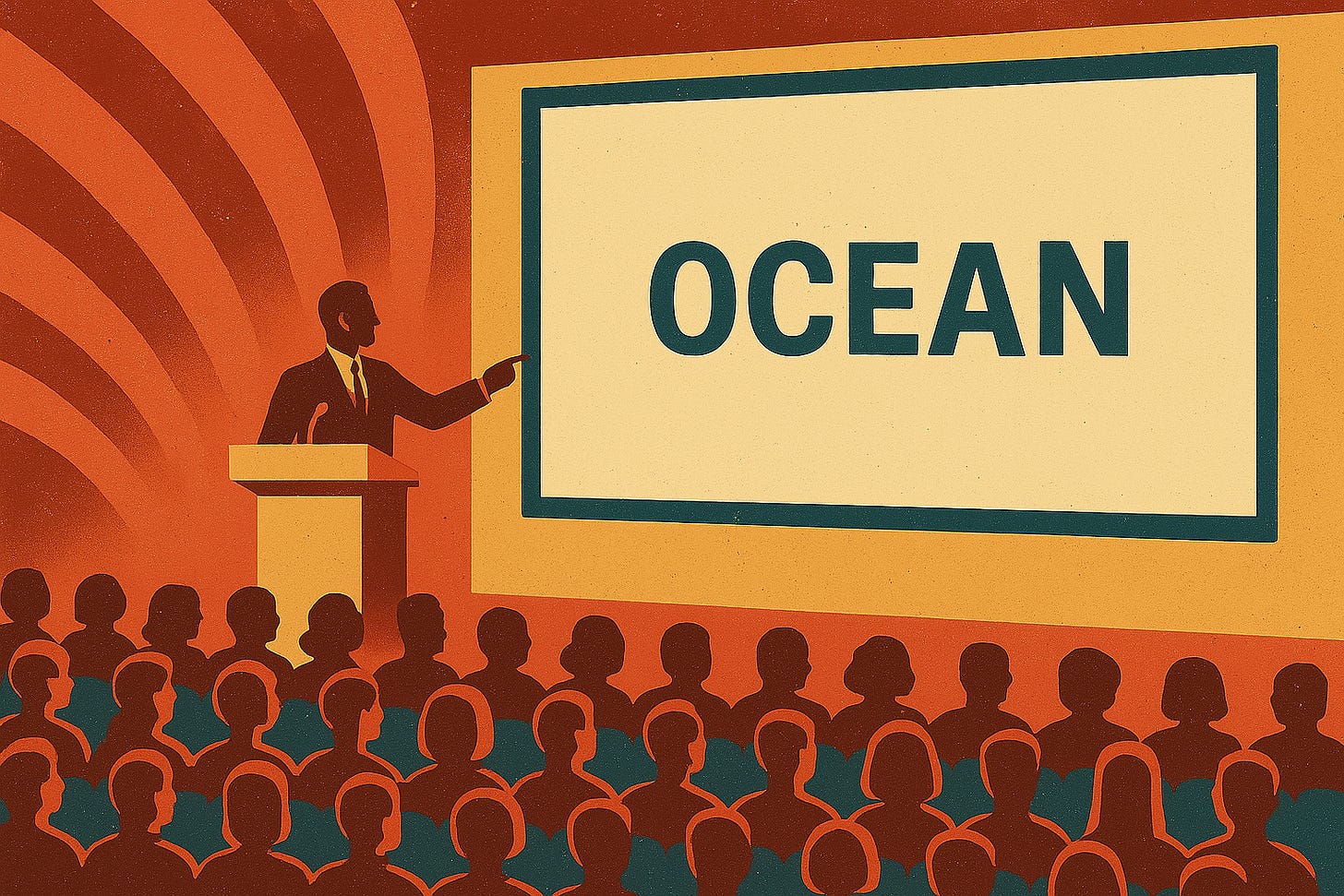Making Waves: Why Visibility Could Be the Ocean’s Most Underrated Ally
The Going Blue Foundation’s OceanStance campaign shows why seeing the problem might be the first step to solving it
Making Waves is a regular series from Voice for the Blue that takes a closer look at the people, ideas and campaigns trying to shift the tide for the ocean. Some are grassroots. Some are global. All are attempts to move the dial in their own way. Until we find the magic bullet, every effort deserves a closer look.
I have a challenge for you.
Open any recent ESG (Environmental, Social and Governance) report from a major company. Or review the agenda of a global summit on sustainability. Now search for the word “Ocean.”
Chances are, it does not appear.
This is not because the ocean is unimportant. It is because the ocean is overlooked. Even though it covers over 70 percent of the planet, regulates climate and produces half the oxygen we breathe, it remains largely invisible in the corridors of power.
A disappearing act with consequences
The ocean rarely features in political briefings, boardroom updates, or sustainability plans. The data confirms this. Sustainable Development Goal 14, which focuses on life below water, is the least funded of all the UN goals. In many ESG frameworks, the ocean is not broken out as its own area of concern.
This gap has real-world consequences. We cannot protect what we do not prioritise. We do not prioritise what we fail to see.
A case study in visibility
OceanStance is a campaign created by the Going Blue Foundation. I was pointed in its direction by Allard Marx, Co-Founder of the foundation. I was intrigued, so I headed to their website right away.
The campaign asks people to include the word “Ocean” in their next presentation. Not to explain it in detail or lobby for a policy. Simply to name it.
This idea is not new. Visibility campaigns have long played a role in social and environmental change. OceanStance draws from that tradition. It aims to create cognitive availability for ocean issues by placing the word into everyday dialogue.
The campaign provides a downloadable PowerPoint deck. It invites individuals to insert a single slide about the ocean into their existing materials. This could be in a school talk, a keynote, a corporate strategy session, or a funding pitch.
Does this approach work?
Can a single word on a slide drive measurable policy change? It may not need to. The goal here is ambient awareness. By creating familiarity with the issue, initiatives like this can help shift baselines. When people see the ocean named consistently, they may start to expect its inclusion. Once it is expected, its absence becomes noticeable.
This is not the same as legislation or funding. It is a precursor. It is part of the broader scaffolding that supports change.
Why small actions still matter
This kind of campaign is not designed to replace policy or protest. It complements them. It asks nothing more than that people make the ocean visible in the spaces they already operate. That is what makes it accessible.
Some may wonder whether simply adding the word “Ocean” to a slide risks being seen as symbolic rather than substantive. That question is worth considering, but it also misunderstands how narrative shifts begin. Most social tipping points are preceded by long phases of cultural groundwork.
OceanStance is not the solution. It is a way to make space for the solution.
A broader ecology of effort
There is no single fix for the ocean crisis. Until a breakthrough appears, we need many approaches working at once. OceanStance may not change the world by itself, but it might create more supportive conditions for those who are trying to.
What matters is that we test ideas like this. We document their impact. We refine them over time. Above all, we keep trying.
Campaigns like OceanStance serve as reminders that everyone can play a part. Some interventions will be systemic. Others will be symbolic. Both can be useful. If we want the ocean to be protected, we have to first make it present. That means naming it. Featuring it. Making sure it is no longer left out by default.
The value of this kind of campaign is not that it solves the problem. It is that it reminds people there is one.
Making Waves is a regular feature of Voice for the Blue, spotlighting emerging efforts to help the ocean. For more stories like this, exploring marine science, frontline conservation, and overlooked strategies for ocean advocacy, please subscribe today.



